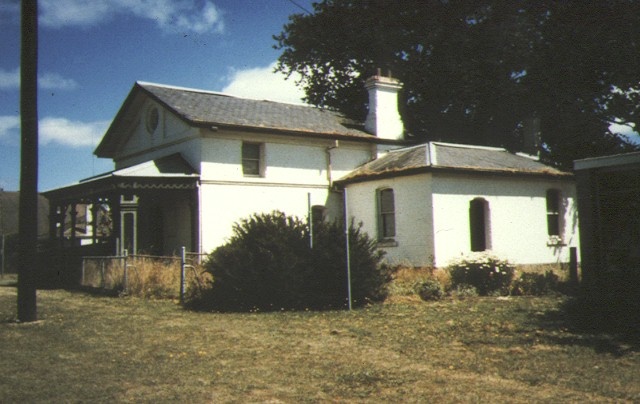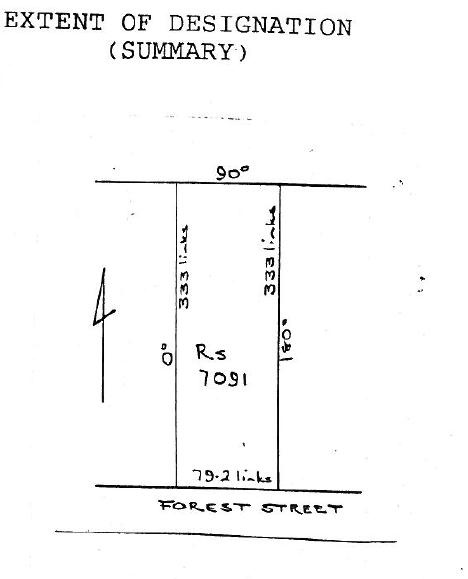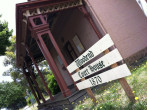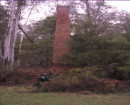WOODEND COURT HOUSE
43 FOREST STREET WOODEND, MACEDON RANGES SHIRE
-
Add to tour
You must log in to do that.
-
Share
-
Shortlist place
You must log in to do that.
- Download report





Statement of Significance
The last court of petty sessions was held there in 1964 and the last coroner's court hearing in the 1970s. The building has since been occupied by the Woodend and District Historical Society.
[Online Data Upgrade Project - 2003]
-
-
WOODEND COURT HOUSE - History
The Former Court House, erected in 1870, was the second court house to be erected in Woodend, designed by H.A. Williams of the Public Works Department and built by Grant and Johnson. The original two-roomed court house is constructed of brick (currently over-painted) on bluestone footings, and has both hipped gabled slate roofs. The building was extended in 1885 by the addition of a second office to the rear of the first office and a porch. The facade of the building is characterised by simple decorative brickwork around the gable and distinctive timber lattice friezes and timber brackets to the verandah. The interior finish of the courtroom is plastered brickwork lined out to simulate stone facing. The ceiling is constructed of varnished pine boards on exposed trusses, also varnished. The bench, dock, clerk’s desk, witness box, rail, seat and washstands remain in the courtroom and there is a cast iron fender under the bench. The clerk’s office is plastered brickwork with a ceiling of varnished lining boards. The slate fireplace surround has been painted black. In the Magistrate’s office the walls are again plastered brickwork while the ceiling is fibrous plaster. There is a timber fireplace surround.
The last court of petty sessions was held there in 1964 and the last coroner’s court hearing in the 1970’s. The building has since been occupied by the Woodend and District Historical Society.The draft statement of significance and the above history were produced as part of an Online Data Upgrade Project 2003. Sources were as follows:
Frances O’Neill, Court House Survey
Report to the Minister for Planning and Environment, GBR 470WOODEND COURT HOUSE - Permit Exemptions
General Exemptions:General exemptions apply to all places and objects included in the Victorian Heritage Register (VHR). General exemptions have been designed to allow everyday activities, maintenance and changes to your property, which don’t harm its cultural heritage significance, to proceed without the need to obtain approvals under the Heritage Act 2017.Places of worship: In some circumstances, you can alter a place of worship to accommodate religious practices without a permit, but you must notify the Executive Director of Heritage Victoria before you start the works or activities at least 20 business days before the works or activities are to commence.Subdivision/consolidation: Permit exemptions exist for some subdivisions and consolidations. If the subdivision or consolidation is in accordance with a planning permit granted under Part 4 of the Planning and Environment Act 1987 and the application for the planning permit was referred to the Executive Director of Heritage Victoria as a determining referral authority, a permit is not required.Specific exemptions may also apply to your registered place or object. If applicable, these are listed below. Specific exemptions are tailored to the conservation and management needs of an individual registered place or object and set out works and activities that are exempt from the requirements of a permit. Specific exemptions prevail if they conflict with general exemptions. Find out more about heritage permit exemptions here.Specific Exemptions:General Conditions: 1. All exempted alterations are to be planned and carried out in a manner which prevents damage to the fabric of the registered place or object. General Conditions: 2. Should it become apparent during further inspection or the carrying out of works that original or previously hidden or inaccessible details of the place or object are revealed which relate to the significance of the place or object, then the exemption covering such works shall cease and Heritage Victoria shall be notified as soon as possible. Note: All archaeological places have the potential to contain significant sub-surface artefacts and other remains. In most cases it will be necessary to obtain approval from the Executive Director, Heritage Victoria before the undertaking any works that have a significant sub-surface component.General Conditions: 3. If there is a conservation policy and planall works shall be in accordance with it. Note:A Conservation Management Plan or a Heritage Action Plan provides guidance for the management of the heritage values associated with the site. It may not be necessary to obtain a heritage permit for certain works specified in the management plan.
General Conditions: 4. Nothing in this determination prevents the Executive Director from amending or rescinding all or any of the permit exemptions. General Conditions: 5. Nothing in this determination exempts owners or their agents from the responsibility to seek relevant planning or building permits from the responsible authorities where applicable. Minor Works : Note: Any Minor Works that in the opinion of the Executive Director will not adversely affect the heritage significance of the place may be exempt from the permit requirements of the Heritage Act. A person proposing to undertake minor works must submit a proposal to the Executive Director. If the Executive Director is satisfied that the proposed works will not adversely affect the heritage values of the site, the applicant may be exempted from the requirement to obtain a heritage permit. If an applicant is uncertain whether a heritage permit is required, it is recommended that the permits co-ordinator be contacted.
-
-
-
-
-
WOODEND SHELTER SHED
 Victorian Heritage Inventory
Victorian Heritage Inventory -
Old Court House-Woodend
 National Trust H1489
National Trust H1489 -
Islay
 National Trust
National Trust
-
'Boonderoo', House and Outbuildings
 Greater Bendigo City
Greater Bendigo City -
'Riverslea' house
 Greater Bendigo City
Greater Bendigo City -
1 Adam Street
 Yarra City
Yarra City
-













